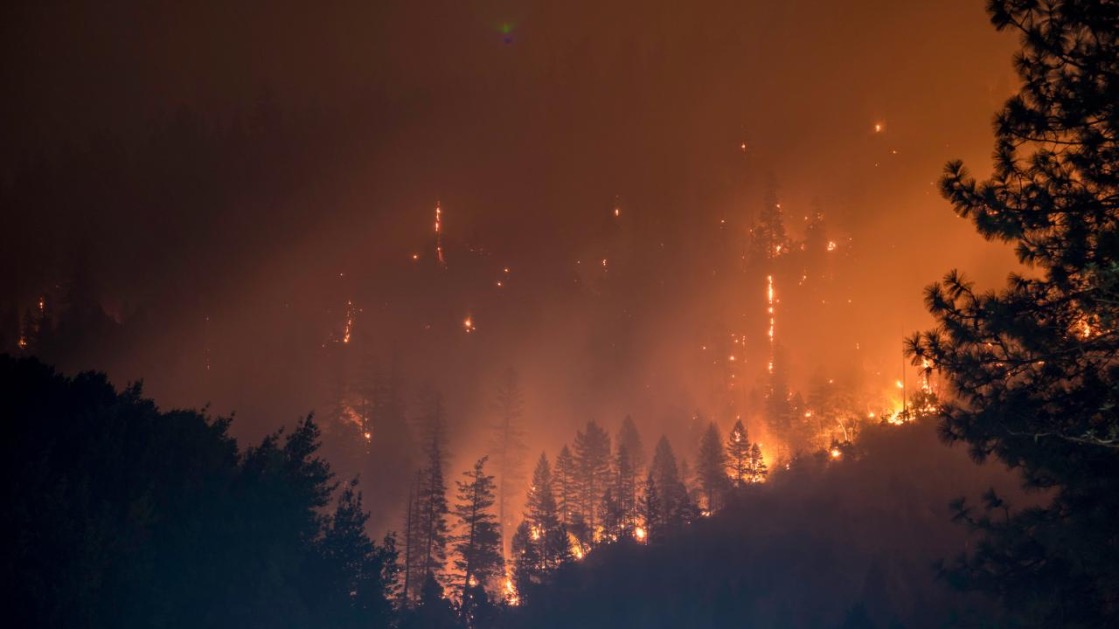Wildfires are wreaking havoc on global forest stocks. In the western United States alone, large wildfires have trebled in frequency and quadrupled in size over the last 20 years, and wildfire season is now two to four months longer than it was a few decades ago. These fires are hotter, longer, and harder to control. They destroy habitation and biodiversity, pose serious risks to human health, damage the economy, and release large amounts of carbon dioxide into the atmosphere each year.

Fortunately, there is a solution. One that can protect forestry from wildfires and lock away tonnes of carbon: is biochar. This is a carbon-rich material produced from biomass through a process called ‘pyrolysis’. This technology is not new; there is evidence of Amazonians using it for agriculture thousands of years ago. Now in the 21st century, biochar is being used to both protect forests from wildfires and enhance soil health for agriculture. What’s more, the income generated by carbon removal credits and offtake agreements is making large-scale biochar production financially viable for the first time in history.
Take Jackson County, Oregon as an example. This area is at high risk of climate change-induced wildfires. These wildfires have a devastating impact on forest and scrubland and reach temperatures capable of burning stored carbon right out of the soil as they spread. Increasingly intense and frequent wildfires have radically changed the composition of forests like the ones found in Jackson County. In times gone, this forest land would be sufficiently dense, with larger, more mature trees and a diverse network of forest-floor foliage to withstand and smother seasonal wildfires. Now, with changes to the environment and to the biodiversity of the forest from extended, climate change-induced periods of heat and dryness, fires can spread even further and cause greater devastation.
One of the best ways to actively protect forestland from wildfires is to regularly clear away the felled wood and woody waste that fuels wildfires. However, it has been until now impossible to create significant revenue from woody biomass clearance, so there has been little incentive to do so. Now these waste materials can be transformed into electricity and biochar, so climate-focused innovators can generate revenue while saving the planet.
One such innovator is Oregon Biochar.
Biochar is a very stable carbon storage material and is capable of locking carbon away from the atmosphere for over a century. This means that biochar passes one of the Puro Standard’s key criteria for CO2 Removal Certificates (CORCs): all carbon removal techniques must store carbon for at least one hundred years. The ‘Rogue Biochar’ produced by Oregon Biochar takes forest-floor woody waste that would otherwise be burned or decompose and transforms it into an agriculture-grade topsoil mix. This topsoil can be used to repopulate forests devastated by wildfires by acting as the fertile soil needed to grow new seedlings. The material created from Oregon Biochar is about 85% carbon by weight and the whole net-negative process has also extremely low emissions of air pollutants (99.6% of particle emissions are filtered out). For every tonne of Oregon biochar produced, around 1.5 to 2 tonnes of CO2 are stored away.
This company is using revenues from carbon removal credits to protect the carbon locked away throughout Jackson County from wildfires and natural decomposition. The money earned from these credits has made a new wave of conservation-focused businesses viable in the US and throughout Europe. Puro.earth was the first carbon removal platform to publish a methodology for biochar certification and is dedicated to finding frictionless ways of funding carbon removals. Now, Puro.earth is a proud partner of innovative new businesses like Oregon, helping them access early-stage financing.
On the other side of the pond, British company DarkBlack Carbon manufactures biochar from waste wood biomass and uses it as a soil enhancer. Continuous crop cycles around the world devastate soil health, and in the UK for example it was estimated that there’s only roughly 30 – 40 years left of usable soil fertility unless we begin farming regeneratively. Spreading biochar is one way to revitalize the soil, increase resilience to flooding and chemical waste, and boost agricultural yields. DarkBlack Carbon estimates that every hectare of land regeneratively farmed with its biochar can remove over 10 tonnes of CO2 per year. Plus, each percentile of soil organic carbon restored using biochar per hectare can hold 23,000 gallons of water, so biochar also has the power to contribute significantly to water conservation.
Transforming woody biomass into biochar is an innovative solution that has the quadruple benefit of protecting forests, enhancing soil health for agriculture, reducing the need for carbon-intensive fertilizers, and contributing to negative emissions. Carbon removal credits are making large-scale biochar production financially viable, creating a new era of hope in the fight against climate change. As we embrace sustainable and regenerative agriculture practices, biochar will become an essential tool for carbon removal and forestry conservation.
Watch the video to learn how Nasdaq and Puro.earth are supporting companies like Zurich Insurance Group to achieve their Net Zero targets by connecting them with carbon removal companies like Oregon Biochar.

